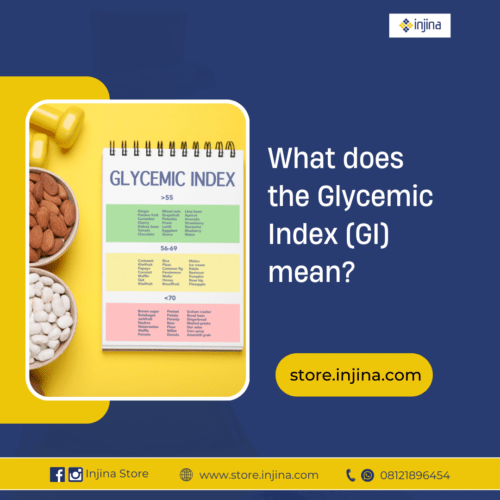There is no way we will talk about Diabetes and not talk about Glycemic Index. As a usual or first-time visitor to our website, it is important to understand what some of the terms mean so you can also pass the vital information to others.
What does the Glycemic Index (GI) mean?
The glycemic index (GI) is a number from 0 to 100 assigned to different foods, with pure glucose marked with the value of 100, which gives you an idea about how fast your body converts the carbohydrates in a food into glucose.
GI primarily focuses on the carbohydrate content of a food and its impact on blood sugar. It doesn’t account for other factors like protein, fat, and fiber content, which can slow down carbohydrate absorption.
How does the Glycemic Index impact Blood Sugar?
Since GI is a ranking system for determining foods that are high in glucose, it helps us know certain foods that cause a rapid rise in blood sugar. These are foods with a high GI (generally 70-100).
You don’t have to worry about your blood sugar every day. Reverse high blood sugar and eat anything you want with our Diabetes Solution! Read more here.
How to know the Glycemic Index Ranking System?
You can group foods into three categories based on their GI: low, medium, and high. A score of 100 means that food has a big effect on your blood sugar, while a score of 1 indicates little effect.
- 1 to 55 = Low
- 56 to 69 = Medium
- 70 to 100 = High
Examples of foods considered to have High, Medium, and Low GI
High GI (70-100):
- White Pounded Yam: Made from starchy white yam, it breaks down quickly into glucose, causing a rapid rise in blood sugar.
- White Rice Jollof: Prepared with white rice, tomatoes, and spices, white rice has a high GI, leading to a potential blood sugar spike.
- White Bread (Agege Bread): Refined white bread is known for its high GI, causing a rapid rise in blood sugar.
- Sugar-Sweetened Drinks (Soft Drinks, Fanta, etc.): These drinks contain high amounts of added sugars, leading to a significant rise in blood sugar levels.
Medium GI (56-69):
- Brown Rice Jollof: Brown rice has a lower GI than white rice, providing a more gradual rise in blood sugar.
- Moi Moi (made with beans): Beans are a good source of protein and fiber, which can help slow down the absorption of carbohydrates and potentially lower the overall GI of the dish. However, the GI can vary depending on the specific bean used and other ingredients.
- Plantain Chips (ripe): Ripe plantains have a higher GI than unripe ones. Enjoy them in moderation.
Low GI (55 or less):
- Okra Soup: Okra is a good source of fiber, which can help regulate blood sugar levels.
- Egusi Soup (with melon seeds): Melon seeds are a good source of protein and healthy fats, which can contribute to a lower GI for the dish.
- Ogbono Soup: Ogbono seeds are a good source of fiber, which can help regulate blood sugar levels.
What to do:
You can generally eat less of these foods over time. Doing this will help you manage your blood sugar levels.
Or you can use a BETTER, SAFER, and FASTER option such as our organic remedy specially made for reversing all forms of Diabetes.
Are you doubting? We receive testimonies from people who were once diabetic.
Begin your treatment today. Click this link.
Facts and Stats about GI
- Focus on the Whole Picture: GI is just one factor to consider when evaluating carbohydrates. Fiber content, portion size, and individual responses can also play a role in blood sugar response.
- GI Can Vary: The GI of a food can be influenced by factors like ripeness (fruits), processing methods (grains), and cooking methods.
- Benefits Beyond Diabetes: A low GI diet can be beneficial for overall health, promoting weight management, reducing heart disease risk, and improving blood sugar control even in people without diabetes.
- GI and Individuality: Everyone’s body reacts differently to carbohydrates. Experimenting with different foods and monitoring your blood sugar response can help you personalize your approach.


Leave a Reply